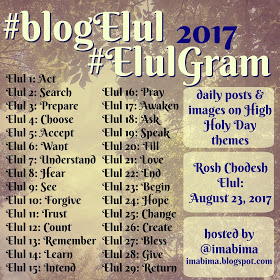 Yesterday I talked about the power of hearing within our tradition, but the High Holy Day liturgy is also full of powerful images, invoking our power of sight.
Yesterday I talked about the power of hearing within our tradition, but the High Holy Day liturgy is also full of powerful images, invoking our power of sight.
The most famous image, of course, is that of G-d as King, seated upon the throne of judgement, deciding what will happen with us in the coming year – will we be written in the Book of Life, as we hope and pray? This is most beautifully and terrifyingly depicted in the famous Unetaneh Tokef prayer. It’s worth clicking over and reading. If Leonard Cohen starts growling in your head, that’s where he got it from.
The day, however, contains other images as well – G-d as a loving parent and as a solicitous shepherd, counting us all and not losing track of any of us. Even if the decree goes against us, it is not absolute:
But repentance, prayer and righteousness avert the severe decree.
The word that is translated here as “righteousness” is one that is usually translated as “charity” – although “tzedaka” has deeper meaning than merely giving money out of the goodness of one’s heart. Like our Muslim cousins, we are called upon to support those who are less fortunate than we are because it is the just (“tzedek”) and right thing to do.
The image of our actions being able to avert the “severe decree” is one that should give us hope. We are not helpless victims of a capricious Judge, but creatures with our own will and our own choices, able to influence our fate.
That’s an image that appeals to me. How about you?
